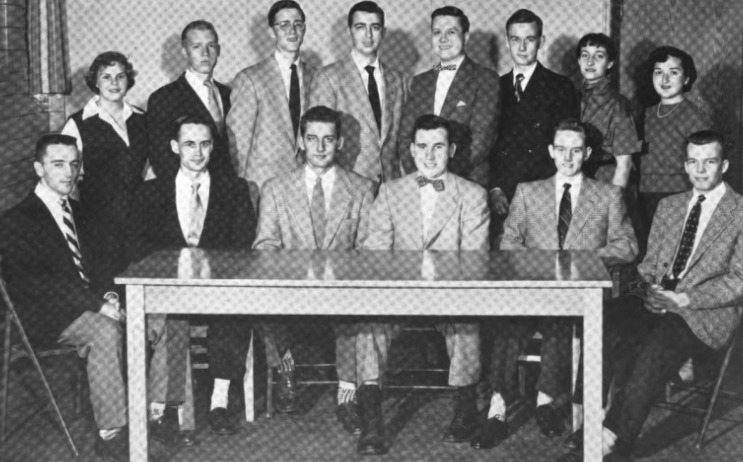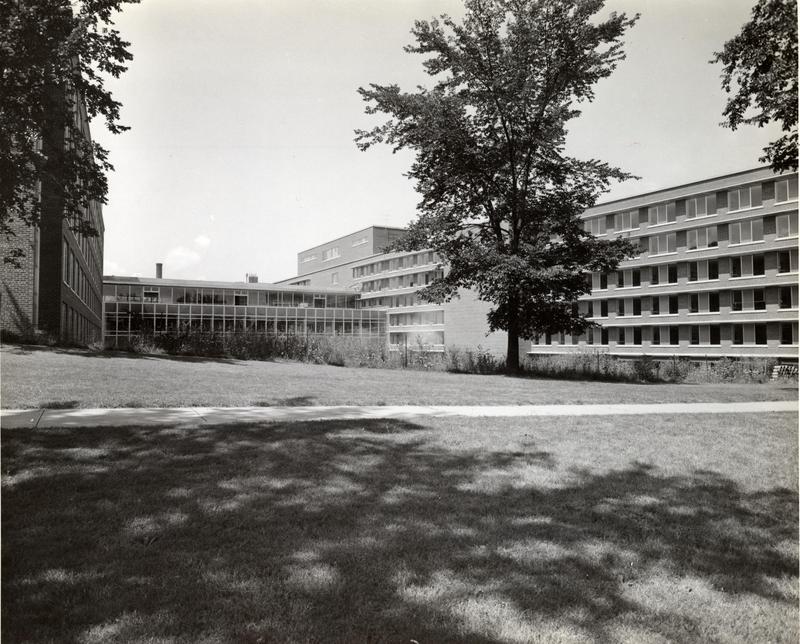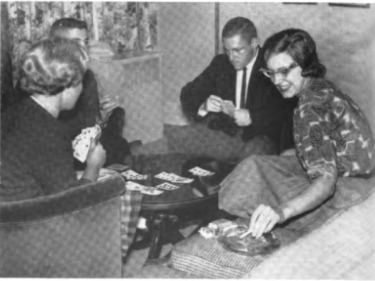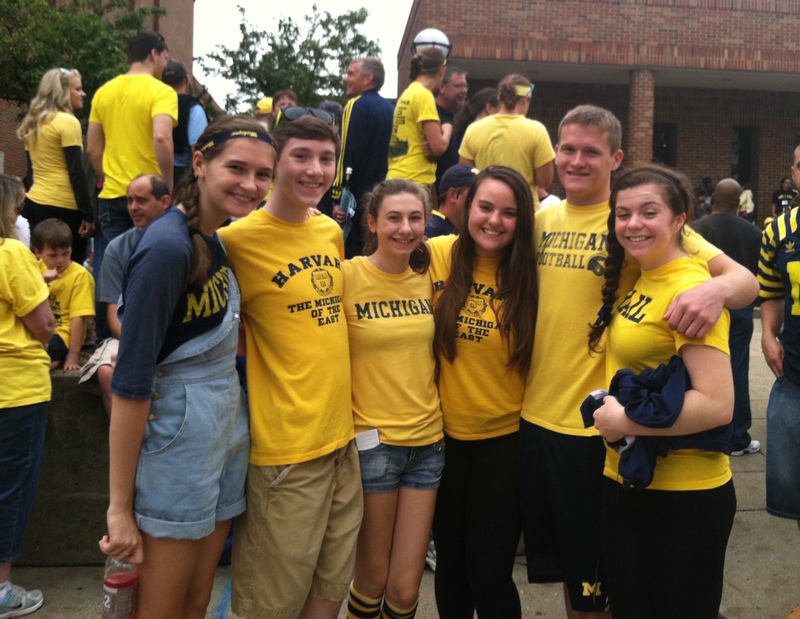Co-Educational Housing
In 1952, due to a severe women’s housing shortage, the first co-ed housing arrangements since 1903 were made when two houses of East Quadrangle becoming women’s housing.1 It was an experiment marked in letters between the Office of the Dean of Women and the East Quad housing director as they tried to reconcile two different sets of rules in one dorm. Issues included women’s hours and smoking privileges in the dining hall.2
An additional women’s hall in a men’s dorm was added in West Quadrangle in 1953 when U-M admitted the largest incoming class of women the University had ever seen.3 Women continued to be housed in West Quad until 1956 and in 1957, two halls in South Quadrangle were occupied by women.4 East Quad housed women until the completion of Mary Markley in 1958, which provided 1,194 additional spaces for women and all residence halls went back to housing a single gender.5 However, the seed of co-ed dorms had been planted and soon the majority of dorms on campus would cease to be single gender spaces.
In 1958, all dorms went back to housing only one gender, but students began asking for purposefully co-ed dorms. In 1961, a committee was created to investigate co-ed housing. They recommended that two halls in both Alice Lloyd and East Quad be used for this purpose, to begin on a trial basis in 1962 and on a permanent basis in 1963.6 Soon after students began asking for more co-ed halls. Students who wrote a proposal for a co-ed house in South Quadrangle said the purpose of co-ed halls was to create a “viable, natural living group under one roof in which young people regard each other as complete human beings rather than by sex.”7 Today in many dorms co-ed halls are the norm and it is not uncommon for students to live in a room next door to someone of a different gender.
In 2008, the formerly all-women’s dorm Stockwell underwent renovations and reopened as a co-ed dormitory and home of the Sophomore Year Experience. Martha Cook, Betsy Barbour, and Helen Newberry are the last three dorms for only women, largely do to their endowments, but also due to the continued wishes of some women to live in all-female spaces. Unlike other dorms and similar to sorority houses, Martha Cook continues to have visitation policies for male visitors and a dress code for the dining area.8
In 2005, the University started housing transgender students based on personal requests on a case-by-case basis.9 In 2013, the Gender Inclusive Living Experience (GILE) started in East Quad, marking the University’s first move towards providing housing for students of all gender identities and gender expressions. This hall is for students who identify as transgender, gender non-conforming, and non-binary, as well as allies, and is meant to be a safe space where residents can socialize and learn in a supportive environment.10
1. The President's Report to the Board of Regents for the Academic Year, 1952 (Ann Arbor, Michigan), 70.
2. John Bingley to Mrs. Forth and Mrs.McCoy, September 16, 1952, East Quad Student Opinion Survey 1960, Housing Division University of Michigan 1923-ongoing, Bentley Historical Library, University of Michigan.
3. The President's Report to the Board of Regents for the Academic Year, 1953 (Ann Arbor, Michigan), 64.
4. The President's Report to the Board of Regents for the Academic Year, 1957 (Ann Arbor, Michigan), 54.
5. The President's Report to the Board of Regents for the Academic Year, 1958 (Ann Arbor, Michigan), 53.
6. Charlene K. Hager and Robert S. Lavine, Co-educational Housing Study Committee Final Report, September 7, 1963, Co-ed Study 1963-1970, Housing Division University of Michigan 1923-ongoing, Bentley Historical Library, University of Michigan.
7. "Proposal: To allow males," February 21, 1963, Co-ed Study 1963-1970, Housing Division University of Michigan 1923-ongoing, Bentley Historical Library, University of Michigan.
8. "The Martha Cook Building Handbook," The Martha Cook Building, Accessed August 16, 2016. http://cookies.studentorgs.umich.edu/.
9. Kellie Woodhouse, "University of Michigan to Offer Limited Gender-neutral Housing," AnnArbor.com, January 25, 2013, accessed July 20, 2016, http://www.annarbor.com/news/university-of-michigan-will-set/.
10. "Gender-Inclusive Housing," Homepage, Accessed July 16, 2016, http://www.housing.umich.edu/gender-inclusive.





